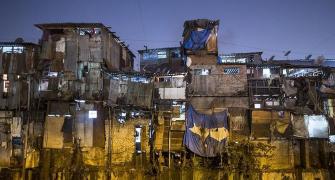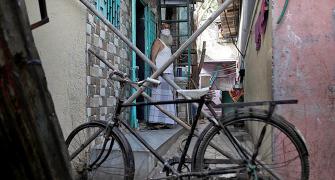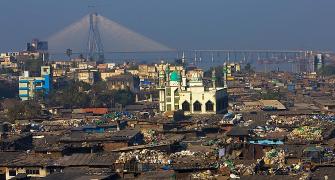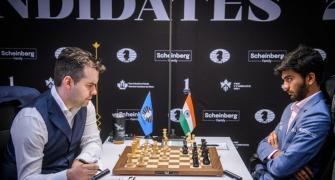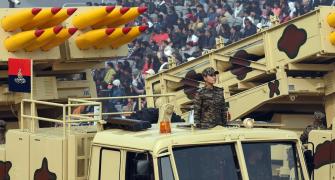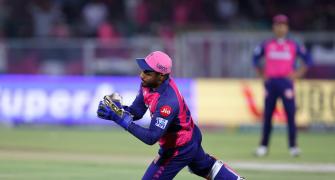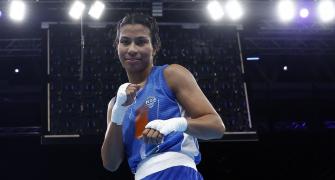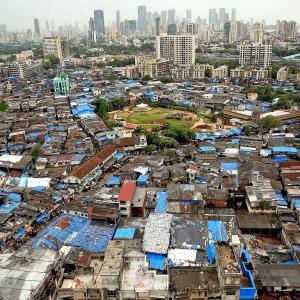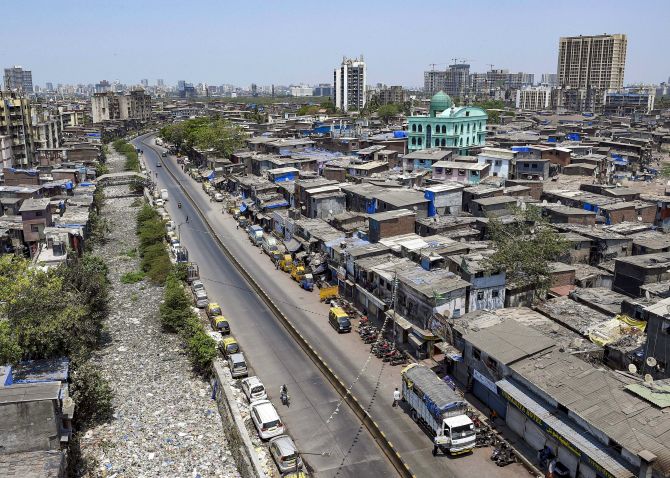'A slum free Mumbai cannot happen with Dharavi at the centre of the city.'
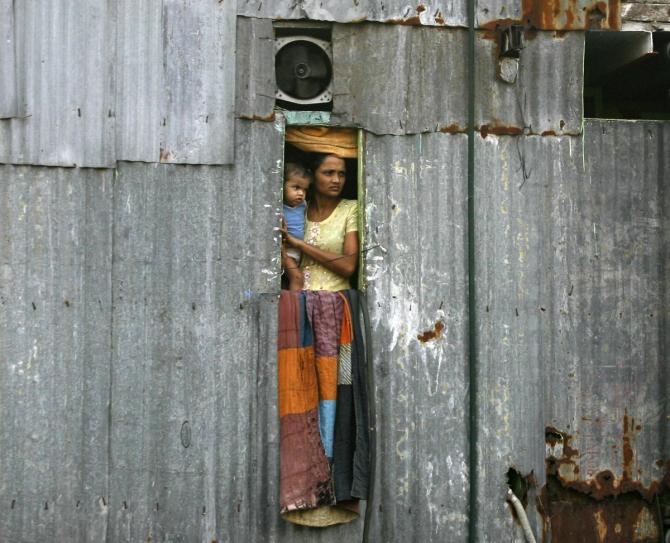
"I don't think we need to romanticise life in Dharavi... I will not say Dharavi will become a role model, but possibly we want to see after this project that other slums of Mumbai go on to become non-slum areas," S V R Srinivas Maharashtra Additional Chief Secretary and Metropolitan Commissioner, (MMRDA), tells Rediff.com's Syed Firdaus Ashraf in the concluding part of a two-part must-read interview.
- Part I of the interview: 'We Want To Develop Dharavi Like Hong Kong'
By doing this gentrification of Dharavi, don't you think that you are taking away the last place of the rural poor who wants to migrate to Mumbai with no penny in his pocket? Like we used to see migrants coming to Mumbai in Raj Kapoor's films of the 1950s...
From Raj Kapoor films to Slumdog Millionaire we have come a long way now.
I have to address macro level and micro level. People who would like to come to Dharavi would like to come and stay, which will not be possible because it will be a formalised sector.
I will not call gentrify as (new) houses will belong to people staying there.
For more people to come to Dharavi will not be possible because the carrying capacity of Dharavi is less.
The density of Dharavi is 4 lakh (400,000) people. The density of India is 600 to 700 and the density of Mumbai is 25,000.
How much population can a portion of land carry? How can you have people staying there without water, toilet and sewerage? This won't be possible (in future).

But...
Let me complete. The large question you asked is what is going to happen to the rural poor? Migration to urban areas is an inexorable thing.
China tried to do this under Chairman Mao and they failed very badly.
Later they encouraged urbanisation. Urbanisation is a global phenomenon which will continue for a big time.
It is going to continue in Mumbai as other cities too.
What we need to do is that the future slums don't arise and slumlords must not arise. And for that we need a proper rental housing policy.
Migration to Mumbai city from earlier statistics was 225 families per day.
It means by the time our interview gets over five families from different parts of the country will land up in Mumbai.
Where will they go? Right now they are going to slumlords who take rent from them and there is rent seeking. But this cannot continue like this as it creates a lot of social and financial problems and creates a ghettoisation of slums.
What we want is a proper rental housing scheme where someone who comes from any village to Mumbai gets proper rental accommodation. Any city you go to, be it Hong Kong, Seoul, London or Tokyo they have rental accommodation.
Cities are magnets of economic growth and where careers are made of young people so they will obviously come here.
This is where schools, colleges and the economy thrive. And gradually, these migrants need to come into the bracket where they can buy homes in cities because the longer they stay in rental accommodation they will not vacate. Urban migration will only increase and not decrease.
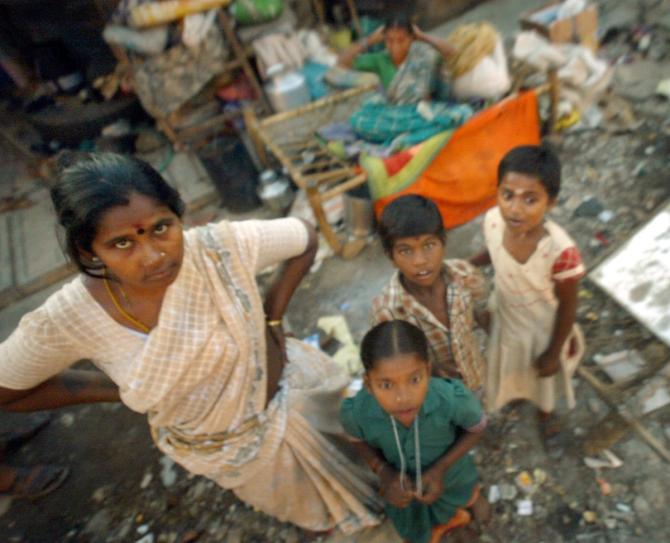
What about the affordability of rents for the poor?
Affordability is inbuilt in this scheme. There are a lot of homes available in Mumbai for rent but many of them are not affordable.
Therefore, we need to have a proper well thought out rental scheme for the poor migrants.
Migration is nothing but indirect subsidisation of cities. Cities must welcome this indirect subsidy and ensure that labour stays here.
How many homes will be for sale commercially from the Adani group after the slum residents of Dharavi are moved out?
For the free sale component the government order is yet to come.
Once it comes we will form a Special Purpose Vehicle where the government will be a partner.
After that we will prepare a master plan and only then free sale and pricing will be decided.
As of now, we do not know how many free sale component homes will be available.
Do you think people will buy homes in Dharavi? Will people buy Dharavi pincode homes as today it is considered a labour class area?
Yes, the clientele may be a little different, but people will buy.
Dharavi is in the heart of the city and not far away is high speed rail (bullet train).
If you see the boundaries of Dharavi you will see it is very close to the financial capital city, Bandra Kurla Complex.
The other side of the boundary is the beautiful residential area of Dadar.
On the other hand, Mahim (west) area too shares a boundary with Dharavi and therefore Dharavi will be the centre to all these areas.
It is the most well connected place in the city as an underground metro station too is coming over here.
Dharavi will not be 'the' address, but it will be an important address of Mumbai city.
Are we not driving out people from community living to small cubicle homes? In this gentrification are you not putting in a loneliness way of life which causes mental depression? This was experienced in Tai Hang when slums disappeared giving way to high rise buildings.
It is (easy) to romanticise slum life, but actually going to live there is different.
Talking about Dharavi in movies and winning an Oscar is a different thing and living there is something different.
Every morning you stand in a queue to fight for toilets and then later you don't have drinking water in your home taps, then surely there is no certainty of the future.
Life is brutish and short. I don't think we need to romanticise life in Dharavi. And let me tell you that we will have open spaces in the Dharavi redevelopment project where people will interact with each other.
Right now, there is no open space in Dharavi.
Statistics show that when people move out of slums and get flats in redevelopment projects, they sell their homes to move back into slums after earning money. So what are you going to achieve by redeveloping Dharavi?
The motto is a slum free Mumbai and a slum free Mumbai cannot happen with Dharavi at the centre of the city.
The motto is to make Dharavi a non-slum.
I will not say Dharavi will become a role model, but possibly we want to see after this project that other slums of Mumbai go on to become non-slum areas.
For example, an area like Govandi (north east Mumbai). And we are going to do the entire project in a very transparent way. We want Dharavi to be a reference model, if not a role model, for other slums.
Are we going to see the end of Dharavi slum tourism?
Possibly, yes.
Feature Presentation: Rajesh Alva/Rediff.com

